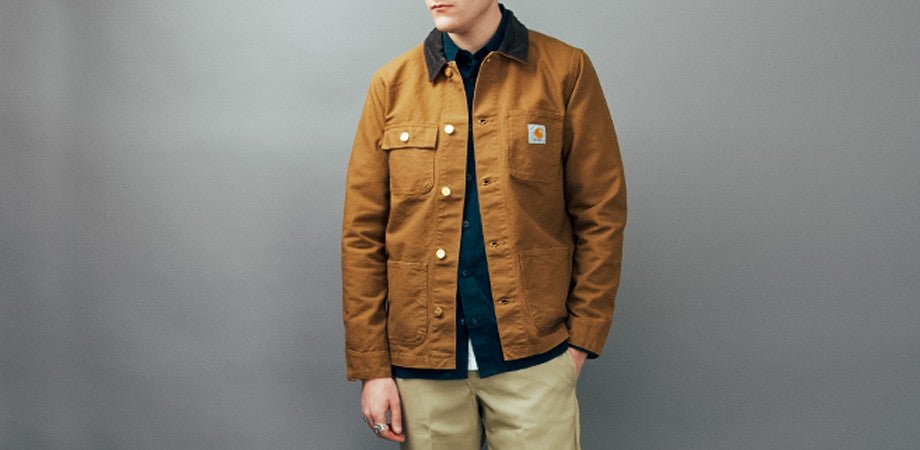Når det kommer til arbejdsjakker - eller andet arbejdstøj - vil der altid være en masse historie omkring det. Her hos Number Six holder vi os gerne bekendt med oprindelsen af så meget herretøj, som vi kan. Uanset om det betyder, at vi laver vores rimelige andel af forskning eller forstår designdetaljer og deres formål. I disse dage vil du finde en masse mærker, der tilbyder en form for standard design arbejdsjakke.
Dette er dog ikke nok for os herretøjsfanatikere, men i dag kan vi finde variationer til vores hjertens lyst: stil, farve, vægt og så videre. For eksempel giver Universal Works Bakers Overshirt lavet med en bomuldspoplin et godt eksempel på en vægtvariation - den samme silhuet og designfunktioner, bare i et meget mere sommervenligt stof.
Så hvad indebærer et standarddesign præcist?
Som navnet antyder, er arbejdsjakker primært funktionelle. Det er rødderne, de er opstået fra, og det er her, de bliver. Formfølgende funktion er et af vores foretrukne aspekter af herretøj, det baner vejen for utroligt design. På grund af dette har arbejdsjakker typisk en 3-lap lommestil (to ved hofterne, en ved brystet). Nogle gange kan du finde en skjult på indersiden eller to påsyede lommer på brystet, forstår du.
For at blive lidt mere teknisk: Arbejdsjakker har typisk forstærkede sømme, dybe manchetter, mere rummelige skuldre og et mellem til tungt stof (normalt bomuldstwill eller kanvas). Der er endda en grund bag de generøse laplommer: de er nemme at udskifte. Det betyder, at hvis en fik et hul, skifter du det bare ud med et andet - enkelt!
De er skåret til at gå over næsten alt, så du har utilitaristiske vibes hele dagen lang. Hvis du var en arbejdende mand dengang, ville du naturligvis ikke have tid til at finde ud af ordentlig lagdeling. Heldigvis betyder det, at de er designet til at overvinde det og har alt, hvad du har brug for i deres lommer - genialt.
At finde sin plads i historien
Fra slutningen af 1800-tallet i Frankrig blev navnet ' bleu de travail ' opfundet. Det refererer til de indigofarvede jakker, bønderne, håndværkerne og jernbanearbejderne bar i Frankrig. De plejede at kombinere det med matchende bukser til det daglige arbejde - men vi hører, at de til søndage i kirken havde deres jakker i sort. Så snart dette traditionelle arbejdstøj flyttede til Storbritannien, ville du se det på minearbejdere, arbejdere og industriarbejdere, så snart revolutionen skete. De mest traditionelle stykker vil have lignet den portugisiske Flannel Labura -jakke i blåt, dette er et af de bedste stykker, der findes på det øjeblik, når man leder efter ægthed.
Det er omkring dette tidspunkt i midten af 1900-tallet, at dette traditionelle franske arbejdstøj flyttede over Atlanten og befandt sig i Amerika. Siden da har det vundet enorm popularitet, og det er almindeligt kendt for at repræsentere en 'amerikansk arbejdsmoral og ånd'. Dette ry blev hjulpet betydeligt af mærker som Dickies, der tog stilen til sig. Du ved lige så godt, som vi gør - alt, hvad Dickies straks fødes i den 'hårdtarbejdende amerikanske' parentes. Og hvis der er noget at gå efter, er det bestemt ikke en dårlig ting.
Indtast: Bill Cunningham
Kultikon, gadestil-game-changer, ydmyg-til-den-slutningen, Bill Cunningham. Ligesom Steve McQueen og James Dean havde deres Persol- solbriller, havde Bill sine troværdige blå arbejdsjakker. Da han døde i juni 2016, er en af de ting, han i sidste ende huskes for, hans altid tilstedeværende blå chore-jakke.
Han forelskede sig i jakken på grund af dens ubestridelige funktionalitet, og han bar en hver dag siden da. Bill blev kendt for det sammen med sit utrolige arbejde inden for street style-fotografering. Han er beviset på, at hvis du leder efter noget tidløst - er du nødt til at gå efter en chore-jakke.
